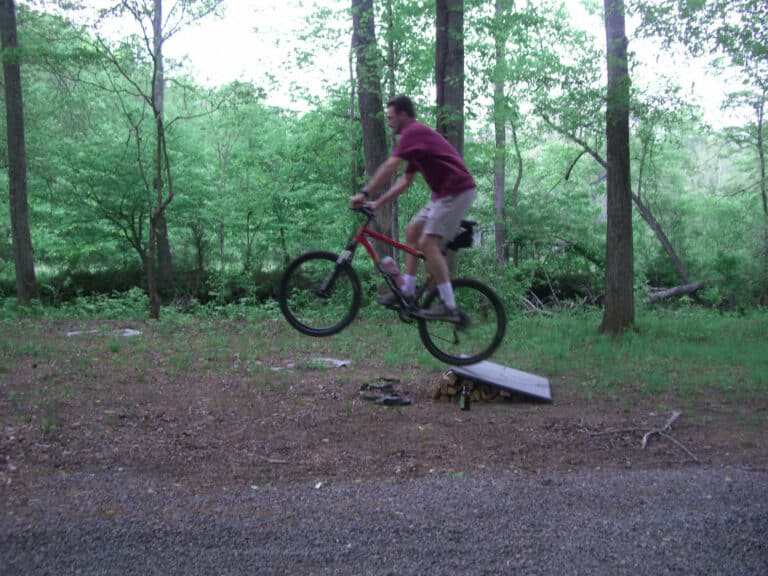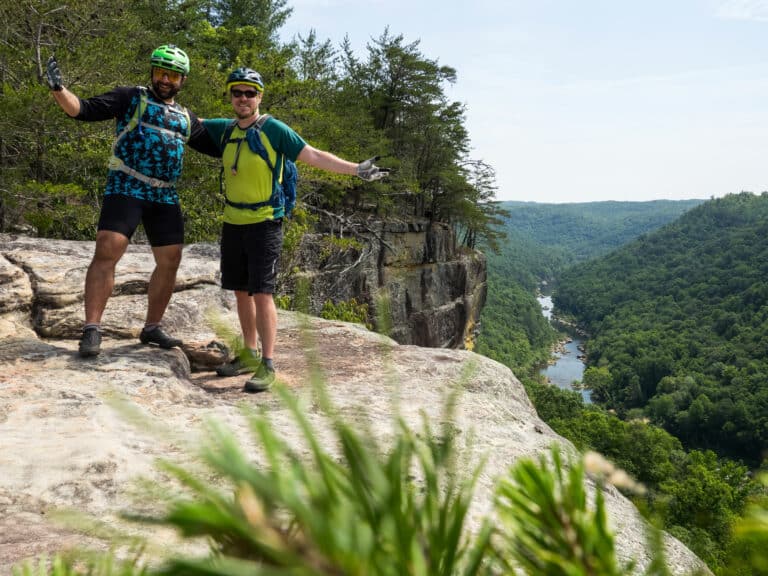Winter is a great time for running, and trail running in particular. Getting out on the trails in the winter provides some great advantages for the trail runner – expansive views without foliage in the way, no bugs or snakes, overgrown vegetation along the trails has died off, frozen waterfalls, and no humidity! However, winter trail running does provide some additional risks that we should all be reminded of as we depart down the trailhead.
Running in the Blue Ridge Mountains, we can often get lulled into a false sense of security because most of our trails are not far from home. Sometimes we’re just a ½ mile from home, we often have cell phone reception, and even from the highest ridges, we can almost always see nearby towns and roads down below. It is still important however that you give the same thought and preparation as someone running deep into an isolated wilderness area because occasionally, trouble can pop up.
Have you heard of the Survival Rule of Threes?
You can only survive for 3 minutes without oxygen.
You can only survive for 3 hours with an unregulated body temp (hypothermia/freezing).
You can only survive for 3 days without water.
You can survive for 3 weeks without food.
If we look at these, the paramount survival problem for the winter trail runner is hypothermia/exposure. I’d like to share three real case examples – two local and one out west – that portray the importance of being prepared when winter trail running either in a large group, or when alone. I will also discuss another related concern, frostbite.
Case 1
Winter group run on the Appalachian Trail from Afton to Humpback and back.
A group run of about 10-12 runners, most of whom were very experienced trail runners, set out on an out-and-back run on the AT. The temps were just below freezing up on the mountain, but made for beautiful running with scenic views everywhere. Everyone felt comfortable running with a large group on a relatively well-traversed trail, during the daylight, and with cell phone reception.

What went wrong:
About 5-6 miles into the run, one of the runners (my good friend Jo Thompson) slipped on a wet/icy rock and fell backwards hard, landing on her hands and fracturing her right radius/wrist. Jo is a very talented runner and is not new to the trails. Suddenly, she found herself in profound pain, and also very cold up on the AT.
As the reality of the injury quickly became apparent to Jo and the other runners in the group, it was clear that she needed medical attention. They were about 1.5 miles from the nearest road, the Blue Ridge Parkway. Fortunately there was cell phone reception, so the local rescue squad was called, and a few of the other runners in the group gave her their jackets and began the slow process of walking her up to the parkway, where hopefully an ambulance would be waiting.
They made it to the road uneventfully (Jo is also super tough!), however the Blue Ridge Parkway was closed due to snow and ice. That should not have been a problem for the rescue squad, however by random unlucky chance, the rescue squad personnel sent on the call did not have the key to the locked gate where they were entering the Blue Ridge Parkway. With her friends huddled around her, they waited for over an hour on the parkway for the rescue squad to arrive. Everyone was getting very cold. At last, the rescue squad came and picked up Jo, and the other runners then had to run about 5 miles back to their cars.
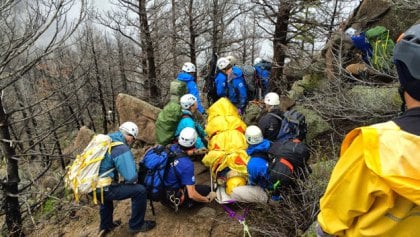
Lessons learned:
“Running in those temps, I learned I really need to be better prepared with gear,” admits Jo. Even in a group run setting, things can go wrong and although there is certainly safety in numbers, when one runner goes down, the other runners in the group are all prone to getting hypothermic as they have now stopped moving to help the injured person. It is important that every person in a group have some form of protection from the cold. Also, even in areas where roads are close by, sometimes things happen like the rescue squad just happening not to have the key to a gate. I’m not disparaging the rescue squad, but sometimes life throws everyone a curveball, so you can only depend on your own preparations.
Takeaway safety precautions:
When running in freezing weather, each and every runner should be prepared for an unexpected stop – what will keep you warm if you are stuck on the trail, not moving for 2 hours or more while you wait for help? I strongly encourage all runners to take an emergency blanket and an “emergency puffy”, or similar lightweight but warm jacket that you can easily pack or strap onto your pack or waist. After Jo’s accident, I never leave on a solo or group run without these items in my pack.
One last winter running tip – often we start our cold-weather runs with extra layers, but quickly warm up and start sweating under all those layers. Keep in mind that if you start getting soaked with sweat, as soon as you stop running you will get cold very quickly. Ideally, you want to continuously make adjustments so you stay warm, but don’t sweat. Things like taking off an outer layer, removing gloves or a hat, and unzipping a layer can go a long way to keep your temperature just right. Be mindful of this and keep making these micro adjustments throughout your run! This is so important!Expect to continuously take off and put back on layers, gloves, etc.!Not long after that event, I was on a night group run in 10 degree weather when one of the runners started suffering from severe knee pain and had to walk most of the second half of the run (like 7 miles!). I stayed behind with him and since we were not longer running, we both started getting cold. Thank goodness for my emergency puffy!
Case 2)
Winter Night Run in the Massanutten Mountains
The setting:
A group night run in the Massanutten Mountains in freshly fallen snow. Temperatures were very cold – in the low teens to start the run and just below zero at the higher altitudes. There were several calf-high stream crossings and many inches of snow on the ground.
What went wrong:
Not long into the snowy trail run, runners crossed a stream and it became apparent that ice and snow were literally freezing in blocks around people’s shoes. Runners had to keep knocking ice off of the bottom of their shoes and ice was ultimately making its way inside the shoes. It soon became difficult for people to tell what was typical numb/cold feet, and what was damaging frostbite. The run took anywhere from 3-5 hours. One runner, Sarah Smith (who is also a figure skating coach) saw huge blocks of ice around her feet after the stream crossings. Sarah also has a mild case of Raynaud’s syndrome, which makes extremities like toes and fingers even more susceptible to freezing temperatures. Despite numb feet and frozen shoes, the group continued on, not quite knowing the severity of the cold and ice. “I think we, as a community, are reluctant to quit”, says Sarah. “But that’s part of what I enjoy about this group.”
Immediately after the run, which took Sarah 4 ½ to 5 hours, her shoes were so frozen that she literally could not get them off of her feet. Ultimately, the socks came off with the shoes – her socks were frozen hard to the inside of her shoes. The pain and fear of frostbite led her to seek prompt medical care, where she learned that she did indeed have a bad case of frostbite on her toes.
The photos below are graphic, but incredibly Sarah is back to running a year later. It took months of intensive therapy, including hyperbaric oxygen therapy, to heal her toes. Her feet will always be susceptible to cold weather and injury. Another runner in the same group had to have the tips of his toes amputated.
Lessons learned:
“If I knew the possible consequences, I would have avoided the water…and it’s also important to note that the length of exposure is really important. Had this been a shorter run we would have all been fine. The faster runners in the group were all ok,” tells Sarah. This is a case where many of you reading see the problem as obvious – running through water and snow in sub-freezing temperatures for a prolonged period of time. However, what would you have done at the first stream crossing as you and a group of trail runners are embarking on an epic training adventure on a beautiful cold and snowy night? Would you have been the one to tell the whole group that “we should all turnaround”, even though you drove 90 minutes to get there? Or after running through snow and streams and seeing the frozen block of ice on your shoes, would you have turned around, splitting up the group and potentially causing a larger issue? Lessons learned here are to really respect the possibility for frostbite when temps are near zero and there are water crossings. In my experience, when the temperature is at least above 25 degrees, your feet will usually keep warm, even if there are stream crossings. However, when the temps get down below 20, and especially if you throw snow into the mix, you should consider the length and course of your trail run.
(Gallery above is courtesy of Sarah Smith, showing her initial foot damage, and the remarkable recovery several months later)
Takeaway safety precautions:
Don’t let subfreezing temps or snow keep you from running on the trail, but you should really consider avoiding known water crossings in extreme conditions. Also, know your limits. If you are someone prone to circulatory issues, you should reconsider joining a group run that may not turn out well for your toes.
Last, it is MUCH easier to decline a group run invitation than it is to turn around at the trailhead or in the middle of the run. So before you jump on the adventure bandwagon of what sounds like a fun time, thoughtfully consider if this is a “smart” decision for you and don’t be afraid to say no to “FOMO” – Fear Of Missing Out.
Case 3)
The Dave Mackey story – solo trail run
On May 23rd 2015, veteran ultrarunner Dave Mackey went out on a routine trail run from his home up to Bear Peak, one of the staple mountain runs outside of his Boulder, CO home. Dave Mackey is a legend in the ultrarunning world with years of experience and numerous victories. He is without a doubt one of the better trail and ultrarunners in the history of the sport.The setting:
What went wrong:
While up on Bear Peak, a run which Mackey had run countless times, a large rock he stepped on randomly gave way and sent him crashing 20-30 feet in an uncontrolled fall down the mountain, after which a large boulder weighing 200-300 pounds landed on his lower leg, pinning him helplessly in place with a shattered leg. Fortunately, there was another trail runner nearby who heard Mackey’s screams for help and an elaborate mountainside rescue effort ensued. He was finally brought down off the mountain after several hours and had to undergo multiple surgeries to repair his shattered leg. He is making an incredible recovery but is still unable to run again.
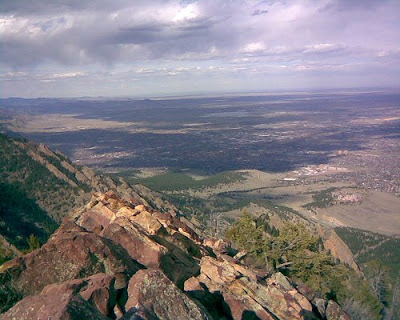
There are two takeaways from this story. First – you are never too good to have a bad accident happen to you. David Mackey is the cream of the crop, and I don’t think anyone would say this happened because he lacked skill or experience. It was a random series of events on a run he had traversed countless times. When you leave the front door, never consider yourself above having something like this happen to you.
Lessons learned:
Second, lets consider that this was a more isolated area and it was cold outside. This very well could have turned into a recovery mission vs. a rescue mission. Remember, three hours to survive when you start getting cold. Trapped on the side of a mountain with a shattered leg in cold weather, you are going to get hypothermic rapidly. Do you have a cell phone? Are you in range? Did you tell anyone where you were going and when you are expected back? Do you have a jacket or emergency blanket? A whistle? Can you make it for three hours or more?
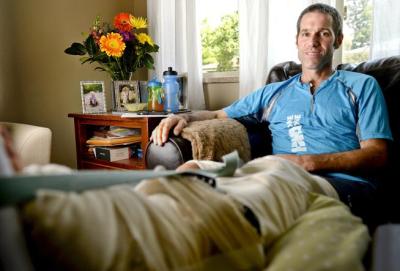
Takeaway safety precautions:
Running alone in the wilderness is personally one of my favorite experiences in trail running. Truly a spiritual event each time. However, this requires some extra planning and communication on the part of the solo runner.
Always, always, always tell someone your exact planned route and when you expect to be back. Write it down for your spouse. Text it to a friend or coworker. Let somebody know, period.
Bring a phone, and ideally run where there is cell phone coverage. If you are unsure of cell phone coverage, bring an emergency whistle. They weigh nothing and would be invaluable if you found yourself down in the woods without a solid way of communicating where you are.
Leave the house expecting that you may fall and be stuck in the woods for 3 hours. Pack a jacket and emergency blanket. Bring enough water and a little snack. If it’s getting late in the afternoon, bring a hat and gloves, even if you don’t need them now. Also, bring a headlamp/flashlight if it’s afternoon in case you find yourself slow to get back and now it’s getting dark.
I hope this article doesn’t discourage anyone from getting out on the trails in the wintertime. Of course, there are examples like these, but these are overall rare occurrences considering how many people are out in the mountains every day. Trail running is still a very safe activity, but just take a few of the basic, simple precautions mentioned above and you will find yourself better prepared if an unlucky event happens and more importantly – it just may save your life. So get out there, explore nature, and push your limits… but be smart!
[divider]More from our BRO Athletes[/divider]

